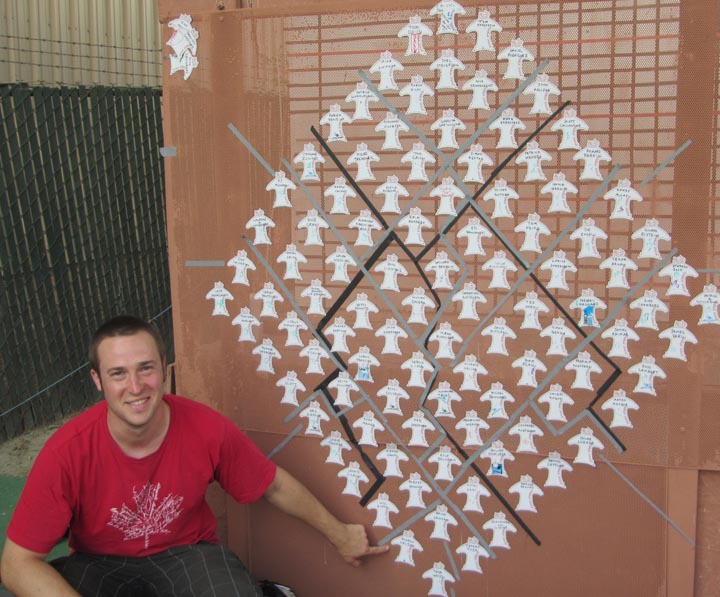 Andrew Levson points out his position in record-setting wingsuit formation. Photo by Shannon Levson
Andrew Levson points out his position in record-setting wingsuit formation. Photo by Shannon LevsonOne hundred skydivers from 21 different countries set multiple records for a wingsuit formation last month, jumping out of five separate planes above Perris Valley in southern California. The jump has been submitted to Guiness World records.
Among the divers was Andrew Levson, an applications engineer for NovAtel, Inc., whose research endeavors with a GNSS-equipped wingsuit was chronicled for an Inside GNSS cover feature in the January/February 2012 issue.
One hundred skydivers from 21 different countries set multiple records for a wingsuit formation last month, jumping out of five separate planes above Perris Valley in southern California. The jump has been submitted to Guiness World records.
Among the divers was Andrew Levson, an applications engineer for NovAtel, Inc., whose research endeavors with a GNSS-equipped wingsuit was chronicled for an Inside GNSS cover feature in the January/February 2012 issue.
“The visuals from inside the formation were incredible,” Levson said of the record-setting attempt. “To see that may people flying together was truly an amazing sight.”
Unlike his efforts as a human testbed for his day job, the GNSS piece in the Perris Valley jumps was comparatively low-tech — no high-precision, dual-frequency GNSS/inertial equipment wrapped into the wingsuit. Instead, several jumpers carried GPS receivers, which provided jump organizers with data that they used to fine-tune the vertical and horizontal speeds that the “base” or lead jumper would set.
“The GPS data was also used to determine where the planes should fly so that we would be able to make it back to the landing area (dropzone),” Levson said.
On the other hand, the organizational effort was far more complex. Rather than coordinating his efforts with a handful of NovAtel engineers, Levson found himself in freefall with myriad other jumpers trying to form a mid-air diamond at speeds up to 80 mph.
“There was a lot of movement — up and down and side to side — within the formation,” Levson told Inside GNSS. “If you watch some of the video, you can see that the formation ‘breathes.’ So, I found it challenging to fly and stay in my slot with so much movement. It is difficult to not react and move when people around you are moving.”
Levson made 40 jumps during an eight-day period — three days in a training camp and five days of record attempts, including the 100-person formation achieved on September 22, the seventh of the eight days.
The NovAtel engineer characterized the organization of the event as “world class.”
“There were highly synchronized break off procedures (flying away from each other to open our parachutes) that required lots of practice on the ground,” he said.
Five airplanes were needed to carry the skydivers to their at 4,114-meter (13,500-foot) jump altitude. Their performance beat a previous record set by 68 skydivers in 2009.
The skydivers caught a break from the weather, which Levson described as “amazing and perfect, Although hot at 35–40 degrees (Celsius, 95–105 F) every day. “Usually during a stretch of that many days, you will have some kind of weather hold,” he said. “Either wind or clouds or rain, but we did not have any weather holds at all.”
Levson served as Canadian representative for the international effort, with three other compatriots qualifying and attending the event.
Solitary skydiving is not a trivial exercise. To undertake it in a wingsuit designed with extra fabric webbing stretched between the legs and under the arms to slow a diver’s descent and increase maneuverability, skydivers must make a minimum of 200 regular jumps.
Even for experienced divers, jumping in a crowd is risky. During the September record effort, on the last day of the event two jumpers collided with each other after their parachutes opened. One of them, Russian skydiver Irina Sinitsyna who reportedly held European and world free-falling records, died October 2 from injuries suffered in the accident, according to Russian news reports.





